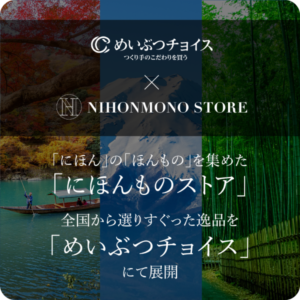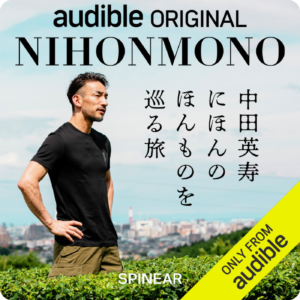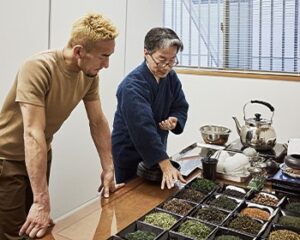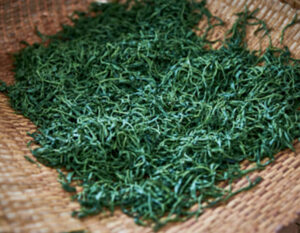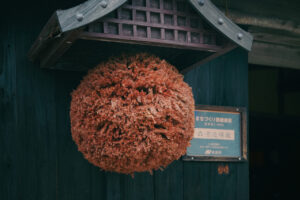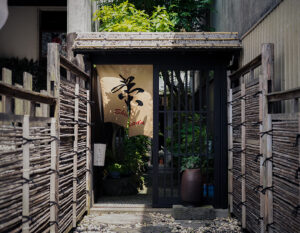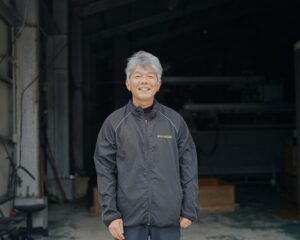In a very small area of about 13 hectares in Mizuho Town, Unzen City, “Unzen Tea” is grown using volcanic ash soil from the Shimabara Peninsula and original organic compost. We visited Mr. Atsushi Nagata, the third generation of Nagata Seicha, a tea farmer at the foot of Mt. Unzen, who continues to take on new challenges every day while maintaining his unique “Fukamushi Tamaraku” method.
Unzen Tea” grown in the rich soil at the foot of Mt.

Unzen, which rises in the center of the Shimabara Peninsula in Nagasaki Prefecture. Unzen, Unzen tea is grown in the mid-mountainous area at an altitude of 50 to 200 meters above sea level. The cultivation of Japanese tea began in this area around 1935 (Showa 10). While mandarin orange cultivation was being promoted as a national policy at the time, the first generation of Nagata Tea Company, which will be introduced later, planted tea trees in Mizuho Town that suited the soil and climate at the foot of Mount Unzen. For about 90 years since then , “Unzen Tea” has been produced in a small area of about 13 hectares. Because it is located in the southern part of the prefecture, the harvest is relatively early. Unzen tea, grown healthily in the clean air, rich soil, and sunshine, has a reputation for its umami taste and bright color.
Characteristics of Unzen Tea
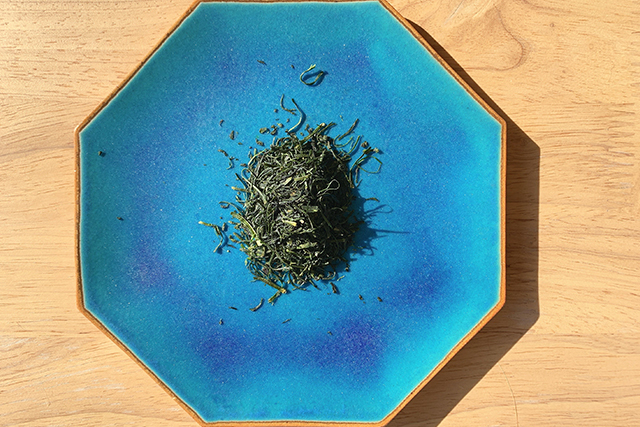
When most people think of Japanese tea, the thin needle-like leaves of “sencha” tea probably come to mind. However, the tea produced in Nagasaki Prefecture is mainly steamed Tamaryokucha (steamed green tea with curved leaves). In the process of steaming raw tea leaves at high temperature to stop fermentation and then rubbing and drying them, the leaves become rounded. The tea is sometimes called “guri-cha” because it looks like a gradient ball.
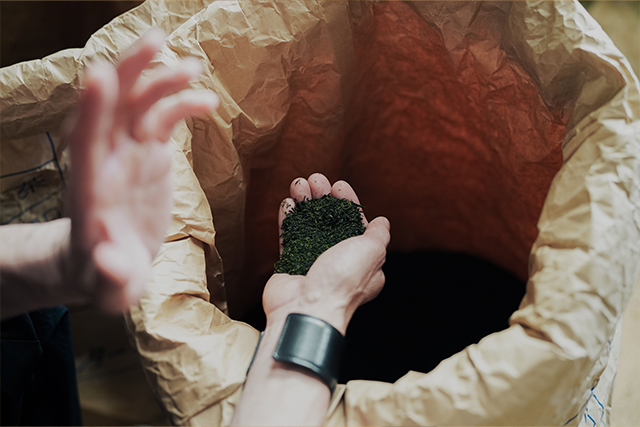
Unzen tea is also a “steamed Tamaryokucha,” which is dried by letting air in the tea leaves without going through the “fine rubbing” process to shape the tea leaves like sencha, so that the tea leaves retain much of their flavor and have a mild taste with reduced astringency.
Nagata Seicha, which has been making Unzen tea for three generations

In the mountains of Mizuho Town, Unzen City. Driving along a mountain road covered with terraced fields, we saw the tea plantation of Nagata Seicha. When I visited there in early May, the harvest had just passed its peak. This year, due to the cold winter, the harvest of the early varieties was late, but the mid- and late-season varieties were as usual, so the harvest was quite tight,” he said. Mr. Atsushi Nagata of Nagata Tea Manufacturing welcomed us with a smile, saying that he is the third generation in the company’s 5-hectare tea plantation that has been in operation since 1935 and handles all aspects of Japanese tea production, including cultivation, production, and sales.
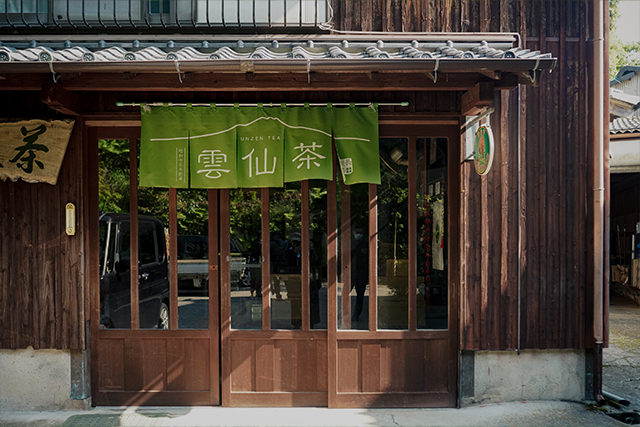
After graduating from Saga University, Mr. Nagata spent two years training in tea production at the National Institute of Vegetable and Tea Research in Shizuoka Prefecture before returning to his hometown, where he became fully involved in the family business at the age of 25. Currently, he grows more than 10 varieties of tea, mainly Saemidori, which is said to have a good balance of taste and aroma, and Okuyutaka, which was recommended to him by his former teacher during his training in Shizuoka Prefecture. Okuyutaka is a popular tea with a clean and refreshing aftertaste. He is always in pursuit of “truly delicious tea” while understanding the individuality of each variety.
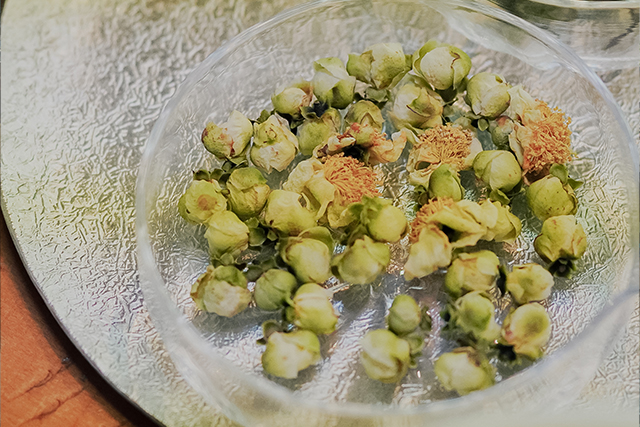
Nagata Seicha has its own unique method of tea production. Unzen tea is basically steamed Tamaryokucha, but we have developed a method called “Fukamushi Tamaryokucha” in which the steaming time is longer than usual. We also roast the tea in a kettle to give it an aromatic flavor. This process has been continued since my grandfather’s generation. The result is a mellow green tea with a beautiful aroma and color. Mr. Nagata also makes various attempts to bring out the original flavor of tea, such as “wilted tea,” in which plucked tea leaves are slightly fermented, “white tea” that has not been heated and is brewed in water, and Japanese black tea. In collaboration with a trusted Japanese tea instructor, he is exploring and pursuing the unique appeal and possibilities of Unzen tea.
Initiatives of Nagata Tea Manufacturing
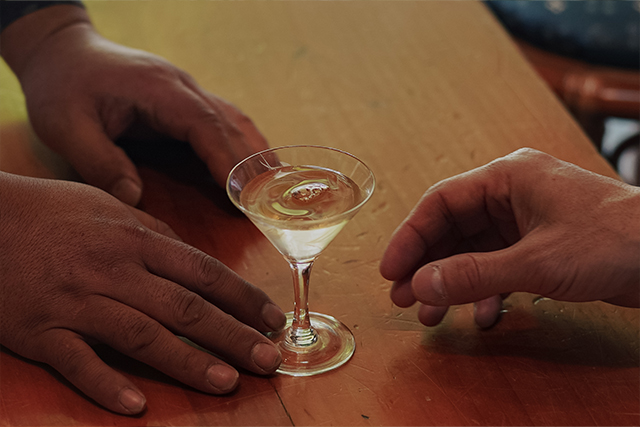
The soil at the foot of Mt. Unzen, where Nagata Seicha is located, is volcanic ash soil mixed with black soil and red soil. The soil drains well, and the tea fields are soft to the touch. Mr. Nagata has nurtured this soil slowly and carefully over many years. For example, in winter, he applies his original compost, a blend of organic matter based on cow manure, and in fall he spreads rice straw to retain moisture and prevent weeds. The compost and rice straw are all from the Shimabara Peninsula. They also cultivate tea completely without pesticides to ensure safe and secure tea production. My father always told me that good tea comes from healthy trees,” says Mr. Nagata. This year, he and his colleagues developed a method to crush wild boars captured as a measure against animal damage and use them as fertilizer, and have started soil cultivation using this method. In addition, they have been experimenting with the use of grape pomace from a winery on the Shimabara Peninsula as a fertilizer. The results will come out in a couple of years,” he said. We are looking forward to seeing the effects on the tea plantation. The goal is recycling-oriented agriculture with an eye on the future. We are challenging ourselves to find a healthy way of farming that we can pass on to the next generation.
Communicating the appeal of Unzen tea from the café
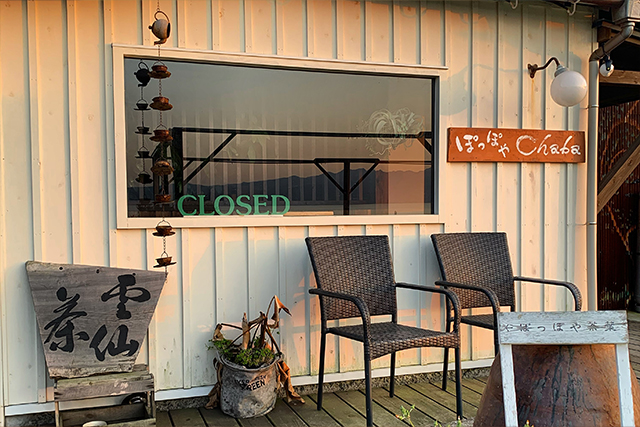
Mr. Nagata felt that simply growing tea leaves in the fields, processing, and shipping them as in the past was not enough to pass on and develop tea culture, so he opened the Japanese tea cafe “Poppoya Chaba” as a new base in 2017. About a 10-minute drive from the tea fields, the store overlooking the Ariake Sea and local train line in front of it was renovated from the home of Mr. Nagata’s maternal parents, giving it a nostalgic atmosphere.
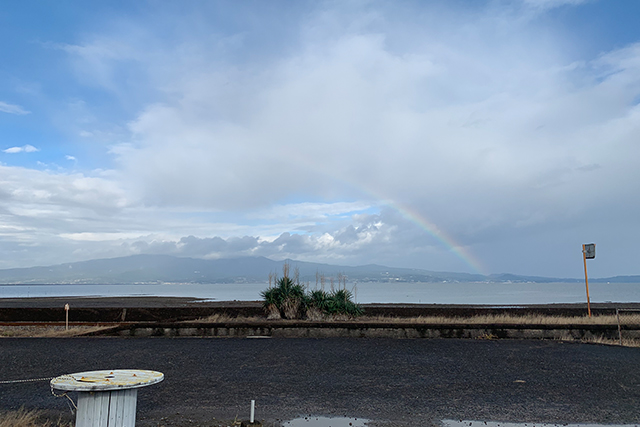
The menu uses a variety of local organic and traditional vegetables as well as Unzen tea. It regularly holds events such as workshops for elementary school students and tea brewing classes, and has a store corner where Nagata Seicha’s tea leaves can be purchased. The company’s goal is to offer consumers the appeal and enjoyment of Unzen tea directly to them through a comprehensive process from planning to production, distribution, and sales. I am a producer who works in the field. However, I cannot know the reaction of consumers only by repeating trial and error in the field. Since establishing a base outside the fields, I have had more opportunities to interact with the outside world and gain new perspectives. I take the issues that arise from these interactions back to the fields and use them as my next goal.
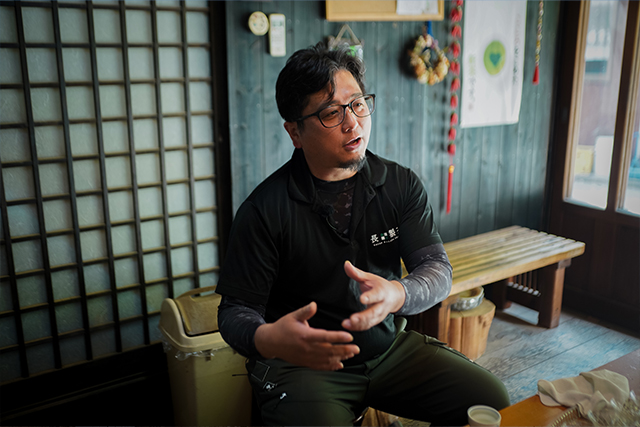
The photogenic café, located right in front of the local train station, attracts tourists from inside and outside of the prefecture every day. The Shimabara Peninsula, a treasure trove of seafood from the sea and mountains, has recently seen an increase in the number of “food professionals” who have moved to the area to work in the agriculture and restaurant industries. I hope to spread not only Unzen tea, but also the food culture that the Shimabara Peninsula prides itself on, from this café,” says Nagata. Mr. Nagata loves Shimabara, where he was born and raised, and is excited about the new form he hopes to inherit.
The future of Unzen tea looks bright, as this small production area of about 13 hectares is expanding its possibilities beyond the boundaries of Japanese tea.
